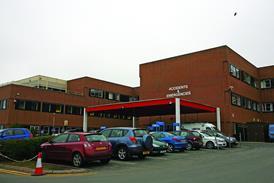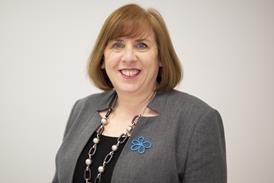Paul Goldsmith considers the link between error reporting from healthcare professionals, complaints from patients and medicolegal claims
“I keep two folders in my filing cabinet,” began the presentation from one of the senior consultants. “One contains all of my cock-ups and one all of my complaints.”
There followed a pregnant pause. “And there is hardly any overlap,” they said.
That was nearly 20 years ago with the aforementioned consultant now long since retired.
‘Comprehensive electronic databases of errors, complaints and claims enabled us to objectively analyse’
It came back to me during discussions with an economist friend last year about processes for driving up standards in the NHS.
Three interrelated tools generally assumed to play important roles are error reporting from healthcare professionals, complaints from patients and medicolegal claims. The default assumption is that all three processes relate to the same cases. Yet talking to individuals on the inside, the perception is very different.
However, can we separate anecdote from fact? What is the true picture?
The establishment of robust and comprehensive staff reporting systems and electronic databases of errors, complaints and claims enabled us to objectively analyse this within a large NHS trust.
Patient complaints
First of all, staff reporting seems good – 13,266 patient related incidents were reported in 2013-14. For context, the trust has approximately 1.5 million discrete patient encounters per year; 96.5 per cent of these incidents were classified as minor or insignificant. The trust is unusual in contracting the obligatory Patient Advisory and Liaison Service (PALS) to an external organisation, doing this to promote organisational independence.

The service dealt with 2,597 contacts and, in addition, the internal Patient Response Department handled about 30,000 calls. The majority of these were dealt with within 24 hours. In keeping with the recent General Medical Council guidance requiring personal verbal apology for errors, dealing with issues quickly and by phone seemed to work well.
However, 702 formal written complaints were received. The average number of separate issues to be addressed per complaint was six. Twenty-nine then progressed to the Ombudsman. Only three of these cases were partly or fully upheld, the remainder rejected.
What is interesting is that only a small minority of complaints related to a prior clinical incident – less than 5 per cent. There are two interpretations to this, neither mutually exclusive. One could be that complaints are picking up errors that are not being reported by staff. This warrants further analysis, although the high volume of staff reporting and the low number of complaints pursued that are then upheld would suggest that this is at most only a part of the story.
The alternative explanation is that there are other factors driving complaints.
Communication issues are recognised to be an important factor here, although one needs to be careful to separate poor communication from patients just not liking the message – for example, if there are financial implications of a particular diagnosis or recovery expectation. In fact
‘Disproportionate resource is being required for a relatively small number of pursued cases’
I’m heartened that with each new generation of doctors, communication skills seem to improve and take up an increasing amount of the formal curriculum - a thumbs up to medical school curricula and the fact that empathy and not just straight As are needed for medical school.
A similar picture is seen when analysing medicolegal claims - most of which didn’t relate to a prior incident and most of which don’t lead to a payout. It is worth noting that when there is a payout, this does not necessarily imply culpability but may be to minimise legal costs.
System vulnerability
Does any of this matter? In a resource limited system, yes. In fact, it was surprising that data on the costs associated with these three systems was not already understood.
Our analysis, which we accept is only approximate, indicated that there were 10 times as many staff employed to deal with complaints, and the same again for claims, as required for staff error reporting.
Moreover, disproportionate resource is being required for a relatively small number of pursued cases. We then have numerous hidden secondary costs.
‘A review of underlying drivers and NHS processes is recommended’
What should be done? We all need to be united in building resilient systems and a strong culture of shared learning from errors and near misses. I think staff error reporting should be made even easier and quicker - patterns can emerge from what in isolation looks like a trivial occurrence but when viewed cumulatively may suggest a system vulnerability.
And patient derived reporting could be a very valuable contribution to this and should be encouraged and facilitated. But given the high proportion of formal complaints and claims that do not appear to have a basis in error, yet are taking up disproportionate resource, review of underlying drivers and NHS processes is recommended.
Paul Goldsmith is a consultant neurologist and neuro lead at the Northern Strategic Clinical Network


























1 Readers' comment